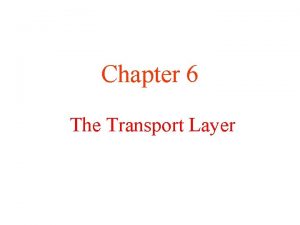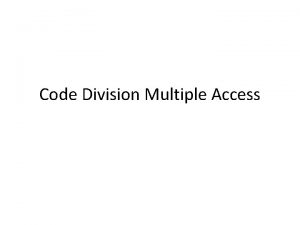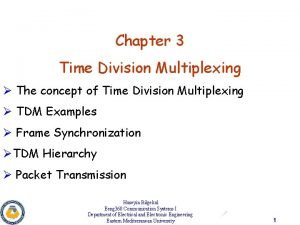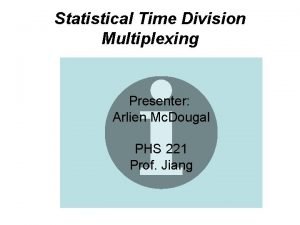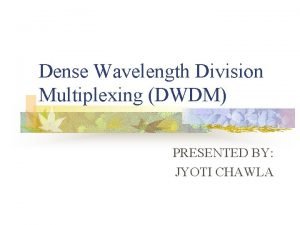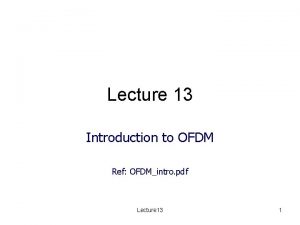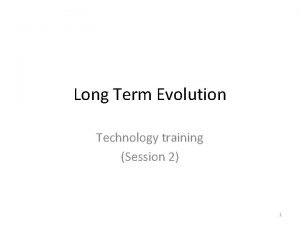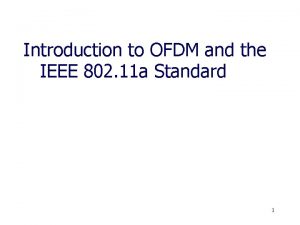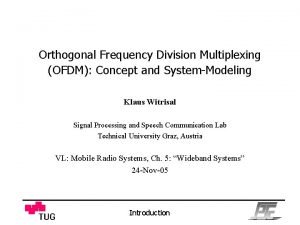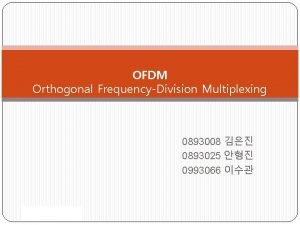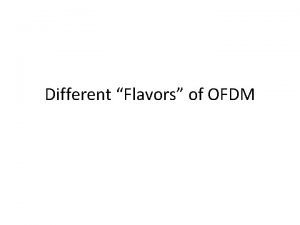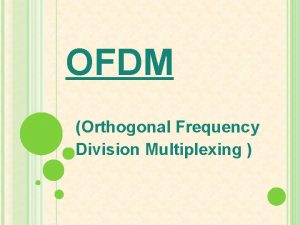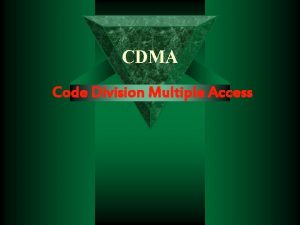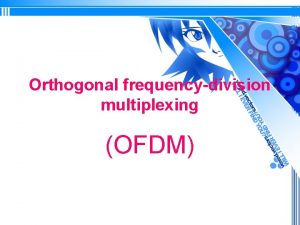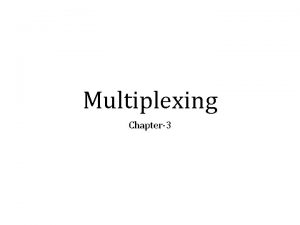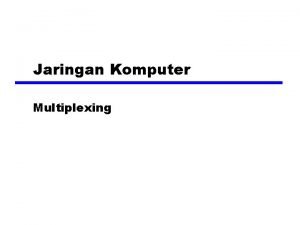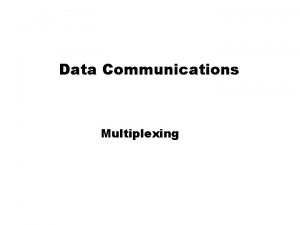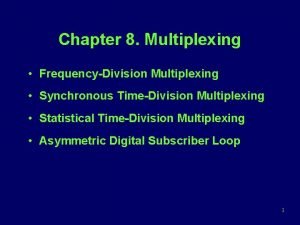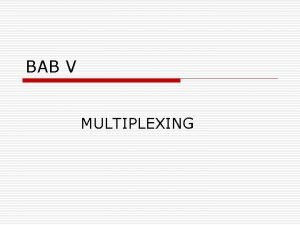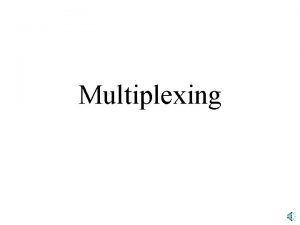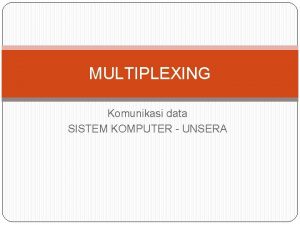CDMA OFDM CDMA Code Division Multiplexing CDMA Used








![OFDM • Suppose we need to send Nc data symbols denoted as d[0] to OFDM • Suppose we need to send Nc data symbols denoted as d[0] to](https://slidetodoc.com/presentation_image_h2/779be0c3cf60615dbd38e57e52e4f7eb/image-9.jpg)




- Slides: 13

CDMA, OFDM

CDMA • Code Division Multiplexing

CDMA • Used in 3 G networks. • Direct Sequence Spread Spectrum: spread a data bit into multiple chips. • Each sender has a unique chip sequence, that is *orthogonal* with other chip sequences.

Simple Examples of CMDA • • A: (-1 -1 -1 +1 +1 ) B: (-1 -1 +1 +1 +1 -1 ) C: (-1 +1 +1 +1 -1 -1 ) D: (-1 +1 -1 )

Orthogonal Frequency-Division Multiplexing • From the highest level, OFDM divides the communication bandwidth into a number of sub-channels, each occupying a fraction of the bandwidth. • Each sub-carrier is modulated by BPSK, QPSK, or other schemes. • Used in 802. 11 a and 802. 11 g.

OFDM • Why OFDM? – More resilient to multi-path fading. – Fast Fourier Transform (FFT) algorithm makes the computation efficient.

OFDM • How OFDM is implemented (following Tse & Viswanath book Ch. 3. 4. 4). • Assume the received sample is • hl is the channel coefficient at tap l. This is caused by multi-path – as we discussed earlier, a weak path will have a different delay compared to the main path. When we are taking sample at time m, the response excited by other data symbols will not be 0 at this point. As a result, the sample voltage contains some fraction from data symbols other than the symbol at time m.

OFDM • In this explanation, it is assumed that hl=0 for l <0 and l>=L. • Basically, we need to assume that the channel coefficients are not all nonzero, which it quite reasonable – the delay spread is usually bounded, and the impulse response is fast approaching 0 after several symbol time.
![OFDM Suppose we need to send Nc data symbols denoted as d0 to OFDM • Suppose we need to send Nc data symbols denoted as d[0] to](https://slidetodoc.com/presentation_image_h2/779be0c3cf60615dbd38e57e52e4f7eb/image-9.jpg)
OFDM • Suppose we need to send Nc data symbols denoted as d[0] to d[Nc-1]. • With OFDM, we not only send these data symbols, but also append a prefix of length L to it at the beginning. That is, we send d[Nc-L+1] , d[Nc-L+2] , …, d[Nc-1] , d[0], d[1], …. , d[Nc-1]. • With these data symbols as input, the output at time m for L<=m<=Nc+L-1 is • Cyclic convolution. y[m] is the cyclic convolution of h and d.

OFDM • Given two series h and d, both are non-zero only within [0, N-1], the cyclic convolution of h and d is defined as • Cyclic convolution. Let the DFT of h[m], d[m] and y[m] be H[k], D[k] and Y[k], respectively. We have Y[k]=H[k]D[k].

OFDM • Cyclic convolution. If there is n’ such that for all m-n, Note that this is true if n’ = (m-n) mod N.

OFDM • The implication of this is that we may transmit the data symbols in the frequency domain. That is, – the data symbols are actually D[k], 0<=k<Nc. – Then we do a IDFT on D[k] to get d[n], 0<=n<Nc. – Then we append the cyclic prefix, and send out the block, called an OFDM block or an OFDM symbol. – The OFDM symbol will go through multipath, say we received y[0], y[1], …, y[L-1], y[L], …, y[Nc+L-1]. – We then take only y[L-1], y[L], …, y[Nc+L-1] and do a DFT on them. – Because y[L-1], y[L], …, y[Nc+L-1] is the cyclic convolution of d[n] and hl, the result of DFT is D[k]H[K]!

OFDM
